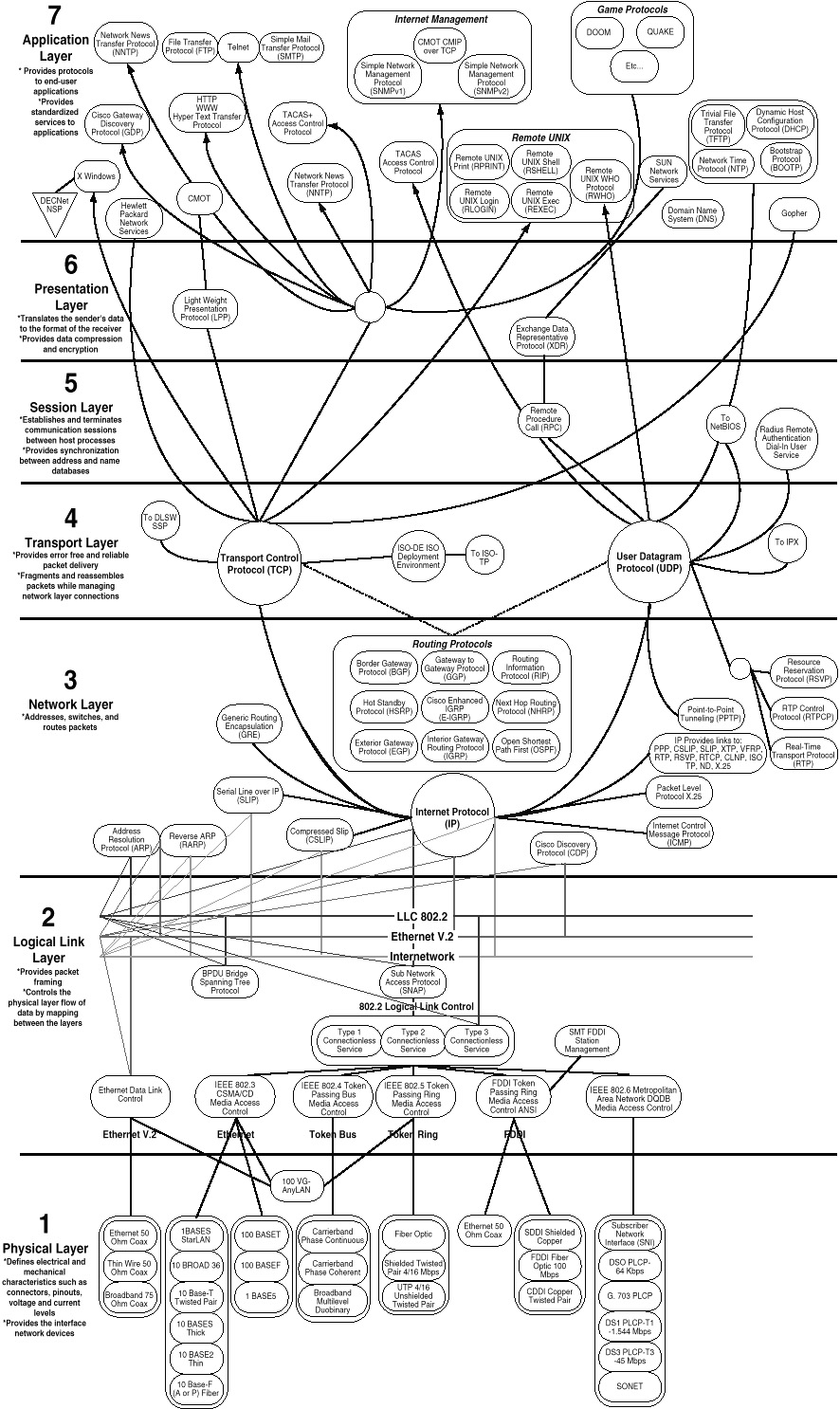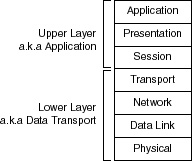Foundations of Networking
Understanding the OSI Reference ModelIt is important for you to understand the basic concepts of the OSI reference model because it is the underpinning of every intranet and network. This section will introduce the reader to the OSI reference model s history, purpose, basic terminology, as well as concepts associated with the OSI reference model. A thorough discussion of the OSI reference model is outside the scope of this book. For complete and exhaustive coverage of the OSI reference model, the following important ISO standards and specifications for the OSI protocol are recommended:
Some other good references include the ISO Web page (http://www.iso.ch/cate/35.html) and the Institute of Electrical and Electronics Engineers (IEEE) Web page (http://www.ieee.com/)
In addition, because the OSI reference model has become the standard upon which protocols and applications are based throughout the networking community, knowledge about its features and functionality will always be of use to you. The sections that follow will answer a few basic questions concerning the OSI reference model. What Is the OSI Reference Model?OSI stands for Open Systems Interconnection, where open systems refers to the specifications surrounding its structure as well as its non-proprietary public availability. Anyone can build the software and hardware needed to communicate within the OSI structure. The work on OSI reference model was initiated in the late 1970s, and came to maturity in the late 1980s and early 1990s. The International Organization of Standardization (ISO) was the primary architect of the model in place today. Why Was the OSI Reference Model Needed?Before the development of the OSI reference model, the rapid growth of applications and hardware resulted in a multitude of vendor-specific models. In terms of future network growth and design, this rapid growth caused a great deal of concern among network engineers because they had to ensure the systems under their control could to interact with every standard. This concern encouraged the International Organization of Standardization (ISO) to initiate the development of the OSI reference model. Characteristics of the OSI LayersTo provide the reader with some examples of how the layers are spanned by a routing protocol, please refer to Figure 1-3. You might also want to contact Network General, as their Protocol chart shows how almost every single protocol spans the seven layers of the OSI reference model (see below).
Figure 1-3 provides a very good illustration to help the reader understand how the seven layers are grouped together in the model, as previously discussed. For a larger picture of how protocols are laid in the OSI reference model, go to the following locations and request a copy of their applicable posters:
Figure 1-4 shows the division between the upper and lower OSI layers.
A cute little ditty to help you remember all seven OSI Layers and their order is as follows:
Understanding the Seven Layers of the OSI Reference ModelThe seven layers of the OSI reference model can be divided into two categories: upper layers and lower layers. The upper layers of the model are typically concerned only with applications, and the lower layers primarily handle data transportation.
|
EAN: 2147483647
Pages: 200

